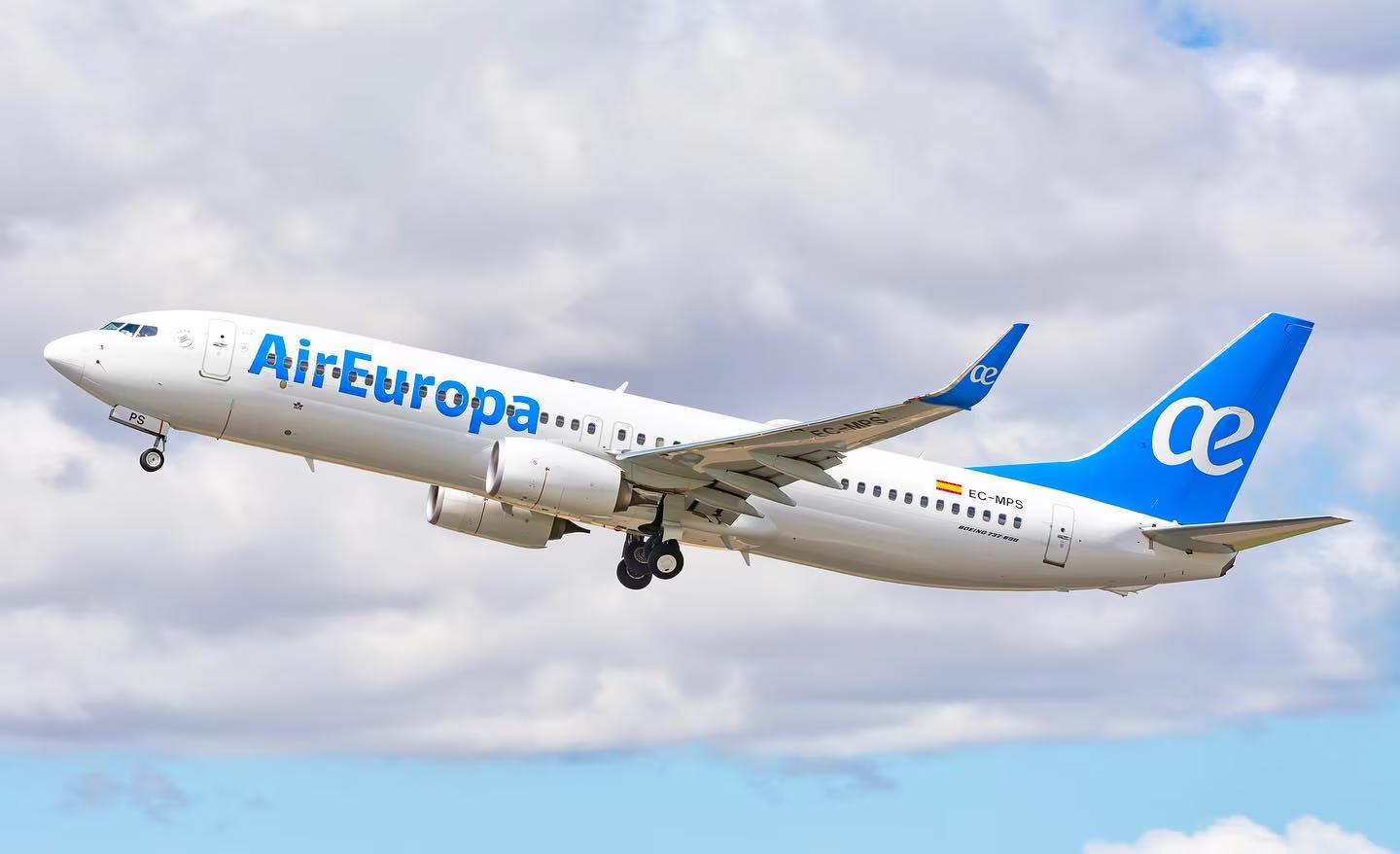Air Europa Flight Makes Emergency landing in Natal, Brazil, on Monday following severe turbulence that injured several passengers. The Boeing 787-9 Dreamliner was traveling from Madrid to Montevideo when the turbulence struck, prompting the urgent diversion, the airline reported.

Emergency Landing in Brazil
Air Europa Flight Makes Emergency landing necessary as it approached the Uruguayan capital. Diverted to Natal’s airport in northeastern Brazil, the airline confirmed on X (formerly Twitter) that injured passengers were receiving medical attention.
Uruguay’s foreign ministry stated that those requiring medical care were transported to Monsenhor Walfredo Gurgel Hospital in Natal, with several already discharged. A Uruguayan diplomatic source informed AFP that between 25 and 30 passengers sustained injuries, though the final count remains uncertain. Most injuries were classified as “mild trauma,” and fortunately, none appeared life-threatening.
To assist affected passengers, Air Europa arranged for another plane to depart from Madrid later on Monday to collect those in Natal and continue their journey to Uruguay.
Recent Incidents and Safety Concerns
This incident, where an Air Europa Flight Makes Emergency landing due to turbulence, is the latest in a series of similar issues involving Boeing aircraft. In May, a 73-year-old British man died, and several others suffered severe injuries when a Singapore Airlines Boeing 777 encountered extreme turbulence, forcing an emergency landing in Bangkok.
Air safety experts emphasize the importance of passengers consistently wearing seatbelts to mitigate risks during unexpected turbulence. Scientists attribute the increase in clear air turbulence—unpredictable and invisible to radar—to climate change. A 2023 study revealed a 17 percent increase in the annual duration of clear air turbulence from 1979 to 2020, with severe cases rising by over 50 percent.
Boeing’s Ongoing Challenges
The Air Europa Flight Makes Emergency landing adds to Boeing’s ongoing troubles. In January, an Alaska Airlines 737 MAX experienced a fuselage panel blowout. The company has also faced scrutiny over two fatal 737 MAX crashes in 2018 and 2019, which collectively claimed 346 lives.
In response to these challenges, Boeing announced in March the departure of CEO Dave Calhoun and has been under intense scrutiny regarding safety and manufacturing standards. On Monday, Boeing disclosed a deal to acquire its subcontractor Spirit, aiming to enhance safety and quality control.
Legal and Financial Repercussions
This week marks a crucial period for Boeing as it navigates a potential turning point with the Department of Justice (DOJ). In May, the DOJ concluded that Boeing could face prosecution for violating a 2021 deferred prosecution agreement related to the 737 MAX crashes.
A lawyer representing the victims’ families revealed that the DOJ has offered Boeing a plea deal to avoid trial. The families are advocating for the criminal prosecution of Boeing and its executives, alongside a nearly $25 billion fine.
The Broader Context of Aviation Safety
The incident where an Air Europa Flight Makes Emergency landing highlights broader concerns in the aviation industry regarding passenger safety amidst turbulence. Turbulence is a common occurrence during flights, but its increasing severity and frequency pose new challenges for airlines and passengers alike.
Clear air turbulence, often invisible to radar and difficult to predict, is becoming more frequent due to climate change. This type of turbulence occurs in clear skies without any visible weather phenomena, making it particularly dangerous as it can strike without warning. Pilots rely on reports from other aircraft and weather models to anticipate turbulence, but these measures are not always foolproof.
Mitigating Turbulence Risks
The rise in turbulence-related incidents underscores the importance of passenger awareness and precautionary measures. Passengers are advised to keep their seatbelts fastened whenever seated, as sudden turbulence can cause severe injuries. Airlines also need to ensure that cabin crew are well-trained to handle turbulence and provide clear instructions to passengers.
Additionally, advancements in technology and better predictive models can help mitigate the risks associated with turbulence. Research into climate change and its impact on flight conditions is crucial for developing strategies to cope with increasing turbulence.
As incidents like the one where an Air Europa Flight Makes Emergency landing due to severe turbulence continue to occur, they underscore ongoing concerns about turbulence and aircraft safety. With climate change exacerbating turbulence frequency and severity, the aviation industry must prioritize passenger safety and robust quality control measures. Enhanced predictive tools, improved passenger awareness, and stringent safety protocols are essential to managing the evolving challenges of air travel.
For further insights and comprehensive content, please visit our homepage



